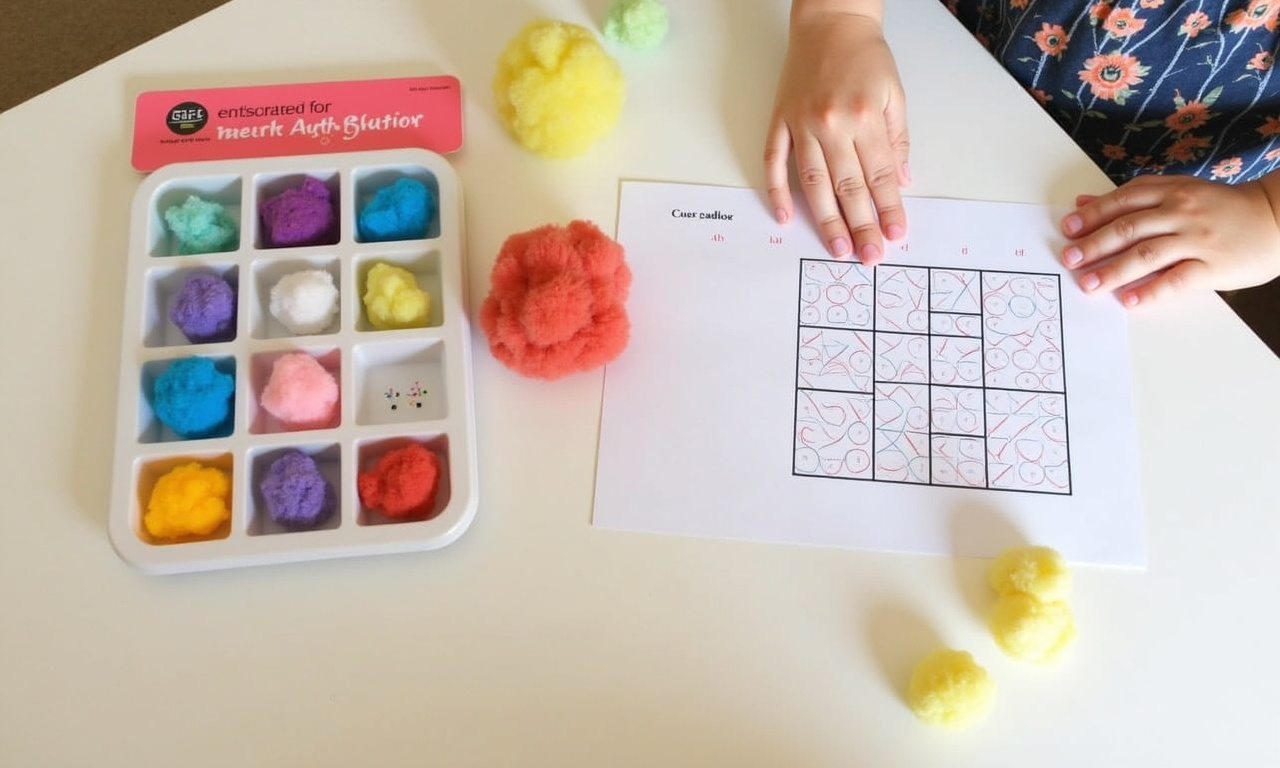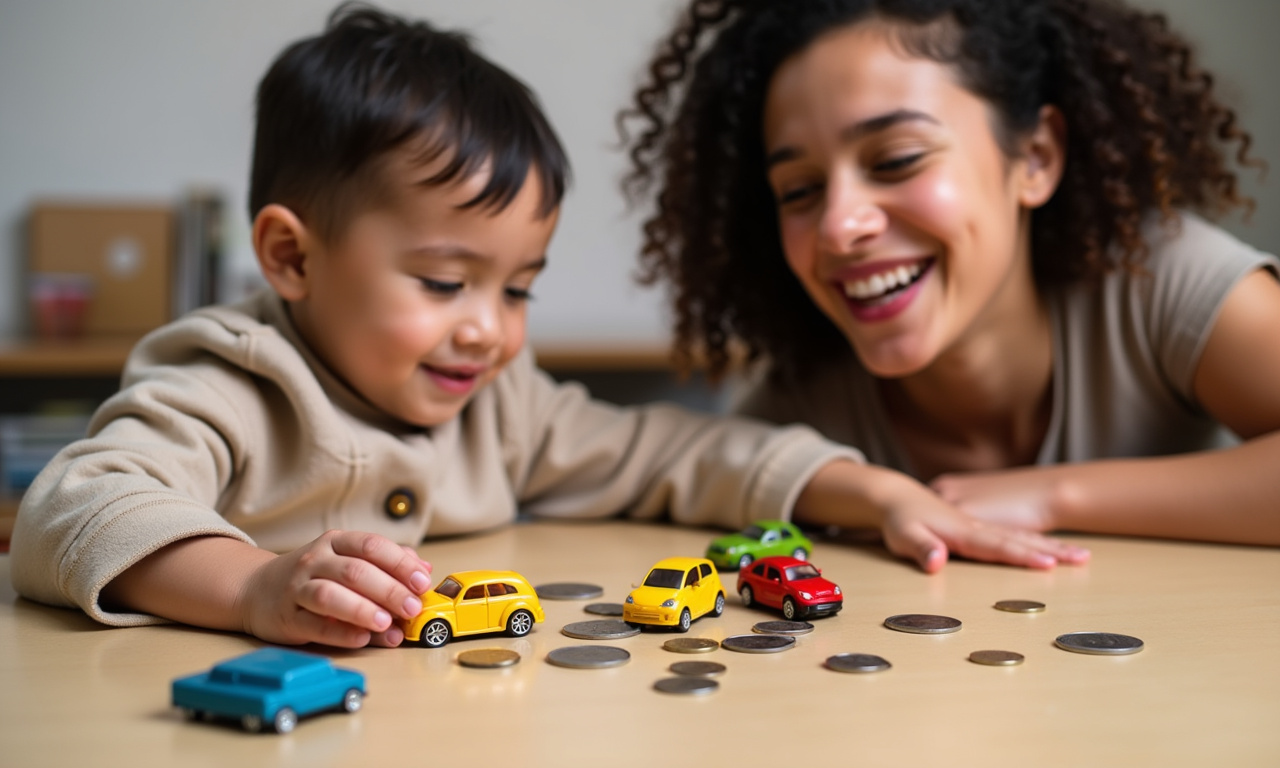As an early childhood educator and a mom to two curious kids, Emily and Nethan, I’m always on the lookout for creative and engaging ways to introduce math concepts to young minds. Here are some fun and effective math activities that you can easily set up at home or in the classroom.
Why Math for Preschoolers?
Mathematics is all around us, and it’s never too early to start introducing its concepts to toddlers. These early years are crucial for laying the foundation for future mathematical development. By making math fun and interactive, we can spark a lifelong love for learning and problem-solving in our children.
Counting with Everyday Objects
Counting is one of the most fundamental skills in mathematics. You can make it exciting by using everyday objects. Encourage your little ones to count their toys, fruits, fingers, and toes. For example, during mealtime, ask your child to count how many apples are on the table or how many spoons are in the drawer. This activity helps practice counting and enhances their understanding of one-to-one correspondence.
A Personal Anecdote
One day, while playing with blocks, I asked Nethan to count how many blocks were in his tower. He enthusiastically counted each block, and when he finished, he proudly announced, “I have 10 blocks!” This simple activity reinforced his counting skills and boosted his confidence.

Pattern Play
Patterns are everywhere, and toddlers can learn to identify and create simple patterns. Start with basic patterns like ABAB (red-blue-red-blue) and let them continue the practice using colored blocks, stickers, or even hand claps. This is a fun way to enhance their logical reasoning and lay the groundwork for more complex pattern recognition.
Ice Tray Mirror Activity
To make pattern recognition more engaging, you can use an ice tray and colored cotton balls or pom-poms. Create a pattern on a guide sheet and ask your child to mirror it by placing the cotton balls or pom-poms in the empty ice cube tray. This activity not only teaches patterns but also develops fine motor skills.

Shape Recognition and Sorting
Introduce your toddler to various shapes through interactive play. Use shape puzzles or sorting toys to help them recognize and match forms. This activity promotes spatial awareness and critical thinking skills.
Shape Hunt
Create a shape hunt game where your child searches for specific shapes in their surroundings. Make a list of shapes they need to find, such as circles, squares, triangles, and rectangles. They can search for these shapes in objects around the house or while walking outside. This activity sharpens their shape-recognition skills and makes learning math an adventure.

Number Stories
Encourage your toddler’s imagination and storytelling skills while incorporating math. Ask them to create simple number stories using their toys or drawings. For example, they can explain how three bears shared ten cookies or how two cars went on a trip filled with four gallons of gas. This activity develops their understanding of numbers in a meaningful context and promotes critical thinking.
Nethan’s Story Time
Nethan loves to tell stories about his toy cars. One day, he told a story about how his two cars went on a trip and collected five coins each. He then counted the total number of coins, which was ten. This activity helped him understand basic addition in a fun and relatable way.

Number Sense Games
Engage your toddler in number sense games to strengthen their understanding of numerals and quantities. Play “I Spy” and ask them to find a certain number of objects in the room. You can also create a number line using tape on the floor and have them jump on the numbers in the correct order. These activities promote number recognition and help them develop a sense of quantity and order.
Tag the Number
This is a great activity to get kids moving. Write individual numbers on pieces of paper and tape them up around the room. Call out a number or roll a die, and then have your child run up and tap the correct number. Everyone then says the number aloud. This game is guaranteed to create a lot of buzz and excitement.
Matching Games
Matching games help toddlers practice visual discrimination and strengthen their ability to identify similarities and differences. Create pairs of cards or objects with matching numbers, shapes, or quantities. Spread them out and ask your toddler to find the matching pairs. This activity sharpens their observation skills and enhances their understanding of key mathematical concepts.
Uno Number Match-Up
Use Uno cards for a simple number matching game. Start with a small number of cards and put them face down. Let pairs of children take turns flipping over two cards per turn, hoping for a match. When they get a match, they can either end their turn or go again. This game is excellent for practicing number recognition.
Building with Blocks
Block play is not only fun but also promotes spatial awareness and mathematical thinking. Encourage your toddler to build towers using blocks of different sizes and shapes. Talk about concepts like “tall,” “short,” “wide,” and “narrow” as they construct their creations. You can even introduce simple addition and subtraction by asking them to add or remove blocks from their towers.
Emily’s Block Adventure
Emily loves building with blocks and often asks me to help her count how many blocks she has used. One day, she built a tall tower and then asked me to add five more blocks to it. After adding the blocks, we counted the total number together. This activity not only reinforced her counting skills but also introduced her to basic addition concepts.
Upcycling Cereal Boxes into Puzzles
Here’s a creative way to upcycle empty cereal or snack boxes into educational puzzles.
Steps to Create the Puzzle
- Choose Your Box: You don’t necessarily need a cereal box; any box will do. I used a cracker box once when I couldn’t find a cereal box.
- Cut Out the Face: Cut out the face side of the box to create a picture puzzle.
- Label with Numbers: Turn the box over and label it with numbers. This will be your number puzzle.
- Cut into Pieces: Cut the labeled side into rows and columns. You can make it as simple or as complex as you like. For younger children, it’s better to start with simpler cuts.
- Draw Cutting Lines: If needed, draw out your cutting lines before you start to cut to ensure even pieces.
The Fun Part
Let your child have a shot at putting together the puzzles. For the number puzzle, ask them to count their way through as they piece it together. If they place a number incorrectly, they’ll quickly realize it’s not right and will need to recount to figure out the correct sequence.
Nethan’s Puzzle Adventure
Nethan was very proud when he finished his number puzzle. Although the cuts I made were a bit too intricate, he was able to figure it out for the most part with a little help. He learned to sequence numbers and understood that if he thought 15 came after 11, it wasn’t right, so he had to recount.
Conclusion
Math doesn’t have to be boring or intimidating for preschoolers. By incorporating these fun and interactive activities into your daily routine, you can make learning math a joyful experience. Whether it’s counting with everyday objects, creating patterns, or upcycling cereal boxes into puzzles, there are countless ways to engage your child in math and set them up for future success.
FAQs
What is the best way to introduce math to preschoolers?
The best way to introduce math to preschoolers is through fun and interactive activities that use everyday objects. This makes math more relatable and enjoyable.
How can I make math activities more engaging?
Use hands-on materials like blocks, puzzles, and real-life objects to make math activities more engaging. Games that involve movement, like “Tag the Number,” also keep children excited and active.
What are some good materials for making math puzzles?
You can use cereal boxes, number cards, and even everyday items like fruits and toys to create math puzzles. Be creative and use what you have at home.
How can I ensure my child understands the concept of patterns?
Start with simple patterns and gradually increase the complexity. Use different materials like colored blocks, stickers, or even hand claps to make pattern recognition fun and varied.
Can math activities be adapted for children with different learning styles?
Yes, math activities can be adapted to fit different learning styles. For example, for children who are more visual, use puzzles and number cards. For those who are kinesthetic, use block-building and movement games.


